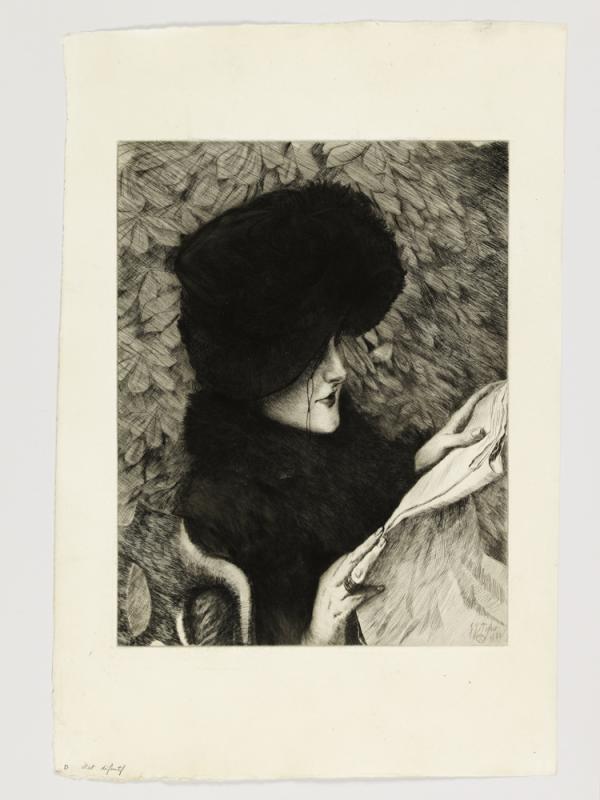James Tissot
View All WorkAlthough he is frequently classified as a Victorian artist, no individual better depicted the splendor and elegance of the Belle Epoque than James Tissot. He studied at the Ecole des Beaux-Arts in Paris in the 1860’s where he became friends with Whistler, Degas and the Impressionists. His early success at the Salon brought him in contact with fashionable society who commissioned him to paint their portraits and chronicle their social occasions.
In 1871, after being involved in the Franco-Prussian War, Tissot moved to London where he worked with Seymour Hayden (Whistler’s brother-in-law) and mastered drypoint. His drypoint etchings are masterworks of light and shadow used to build contrasting textures and patterns that show a quality of melancholy and tension between the figures giving his works a much greater psychological impact. The influence of realism can be seen in his style and his subjects as they were depicted with meticulous detail and precisely graded tones. He was also clearly influenced by the Belle Epoque style as his works are both romantic and of sheer decorative beauty.
Many of Tissot’s paintings and prints dealt with scenes from his private life and great romance with Kathleen Newton, a beautiful, young divorcée with two illegitimate children. Her premature death in her late twenties deeply sorrowed Tissot. He moved back to Paris, plunged himself into his work and subsequently traveled extensively painting religious scenes. He spent his last two years at the abbey in Buillon and died in relative obscurity.

